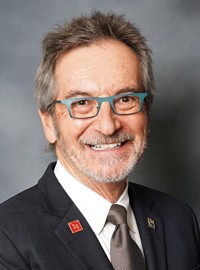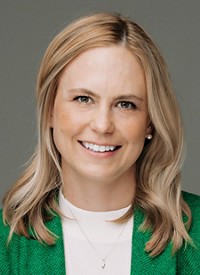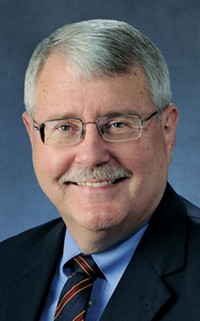Advertisement
Grab your lab coat. Let's get started
Welcome!
Welcome!
Create an account below to get 6 C&EN articles per month, receive newsletters and more - all free.
It seems this is your first time logging in online. Please enter the following information to continue.
As an ACS member you automatically get access to this site. All we need is few more details to create your reading experience.
Not you? Sign in with a different account.
Not you? Sign in with a different account.
ERROR 1
ERROR 1
ERROR 2
ERROR 2
ERROR 2
ERROR 2
ERROR 2
Password and Confirm password must match.
If you have an ACS member number, please enter it here so we can link this account to your membership. (optional)
ERROR 2
ACS values your privacy. By submitting your information, you are gaining access to C&EN and subscribing to our weekly newsletter. We use the information you provide to make your reading experience better, and we will never sell your data to third party members.
Policy
What are ACS Financial Planning Conferences?
by Joseph Heppert, Chair, ACS Committee on Budget & Finance
October 23, 2017
| A version of this story appeared in
Volume 95, Issue 42
Since 1978, the American Chemical Society has periodically convened a group of leaders from across the organization to assess its financial health, review opportunities and threats, address financial trends, and reconsider existing financial guidelines and policies. The next Financial Planning Conference (FPC) is scheduled for Nov. 5–6 in Washington, D.C.
The conference is typically attended by members of the ACS Board of Directors, the Committee on Budget & Finance, ACS managers and senior finance staff, and other invited participants and experts.
ACS has held 10 FPCs since their inception, and they last between a day and a half and two-and-a-half days. The conferences are cochaired by the ACS Board chair and the chair of the Committee on Budget & Finance. The cochairs, the ACS executive director and CEO, and the ACS treasurer and CFO usually select the topics. This group also develops the conference agenda. Staff members prepare background materials, presentations, and other supporting documents for attendees.
What FPCs have accomplished. Outcomes from previous conferences have included the establishment of and revisions to ACS’s financial guidelines (the five performance metrics presented by Budget & Finance at each ACS Council meeting); the understanding of future trends (information technology, managing the velocity of change, membership trends and membership growth prospects); the establishment of a means of pursuing new revenue sources; the creation of an ACS contingency plan process; the initiation of the Society Program Portfolio Management process; the exploration of asset diversification; the establishment of a strategic planning process for ACS governance; and the development of strategies for controlling overhead costs, such as physical buildings and infrastructure, information technology, and general management.
The need for FPCs. ACS is a large organization, with nearly $1.4 billion in assets, $565 million in annual revenue, more than 156,000 members, and approximately 2,000 employees. Our organization and its many facets, including CAS, ACS Publications, Membership & Society Services, Education, Scientific Advancement, External Affairs & Communications, Information Technology, and Finance, face daily challenges from a variety of sources. These include general economic and capital market volatility; competition in publishing, secondary publishing, and information service providers; changing employment conditions for our members; changes in the way members attend meetings; and how younger chemists view professional societies. And these issues represent just some of the daily challenges.
Additionally, the society’s ability to judge how well it is doing by different measures is critical. Current measures include performance targets, membership targets, financial guidelines, and many more.
An FPC provides time for leadership from both governance and staff to zero in on the key factors affecting strategic, environmental, and other critical influences facing the organization. Through this process, we optimize the opportunities and minimize current and future challenges for the society.
The 2017 FPC. The theme of the upcoming conference in November is “Ensuring the Society’s Growth & Financial Sustainability in a Rapidly Changing Environment.” Discussions during this day-and-a-half meeting will relate to alternative financial scenarios for 2018 to 2022; possible implications for the society’s major sources of net revenue—for example, from CAS, ACS Publications, and investments; and financial projections for CAS and ACS Publications through 2022.
These models will be incorporated into an overall financial outlook for the society from 2018 to 2022. ACS staff will also provide management’s assessment of the society’s evolving risk profile. Focused discussions will evaluate the appropriateness of ACS financial guidelines, the use of risk avoidance strategies for the society, and a review of recent trends in ACS membership.
The membership discussion will examine the challenges and opportunities posed by current and potential alternative dues models. Ultimately, specific recommendations will be drafted to be presented to the ACS Board for its consideration.
I hope this brief history of the society’s FPCs gives ACS members a perspective of the degree of mid- to long-term financial planning that routinely goes on behind the scenes. Along with my conference cochair, ACS Board Chair Pat Confalone, I look forward to a robust discussion at the 2017 FPC, leading to recommendations for board consideration at its meeting in December.
If you have any questions or comments, please do not hesitate to contact me at b_ffeedback@acs.org.
Views expressed are those of the author and not necessarily those of C&EN or ACS.






Join the conversation
Contact the reporter
Submit a Letter to the Editor for publication
Engage with us on Twitter